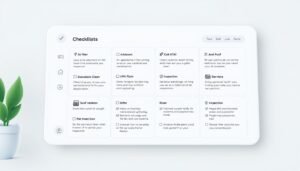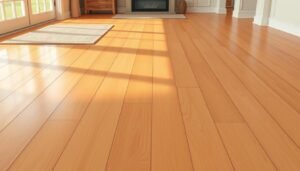Welcome to your complete guide for maintaining your home’s climate control equipment. Many homeowners forget about this crucial component since it’s often hidden away in basements or closets.
Regular maintenance keeps your family healthy and ensures peak performance. Whether you call it a furnace, air conditioner, or heat pump filter – it’s the same vital part.
This simple task delivers significant benefits for both system efficiency and indoor air quality. Proper care reduces energy costs while creating a healthier living environment.
Key Takeaways
- Regular filter maintenance is essential for system performance and family health
- Filters can be located in various spots throughout your home
- All heating and cooling systems use the same type of filter component
- Proper maintenance reduces energy costs and improves efficiency
- Simple filter changes can significantly improve indoor air quality
- Routine care extends the lifespan of your climate control equipment
- This guide covers everything from filter types to replacement instructions
Why a Clean Air Filter is Non-Negotiable for Your Home
Many homeowners underestimate the importance of this simple component. Your climate control system depends on proper filtration to function correctly.
A well-maintained unit delivers better performance and protects your investment. Ignoring this basic task can lead to serious consequences.
Enhancing System Efficiency and Airflow
Clogged components force your equipment to work much harder. This strain reduces overall performance and increases wear.
Proper maintenance ensures optimal operation throughout your living space. You’ll notice more consistent temperatures and better comfort levels.
Boosting Indoor Air Quality and Health
These components capture harmful particles that affect respiratory health. They trap pollen, pet dander, and other irritants effectively.
People with sensitivity issues benefit greatly from regular care. Clean environments reduce triggers for various conditions.
Protecting Your System and Reducing Energy Bills
Regular attention prevents unnecessary strain on mechanical parts. This extends equipment lifespan and avoids costly repairs.
Efficient operation translates directly to lower monthly expenses. You’ll see the difference in your utility statements.
Consistent maintenance represents one of the smartest investments in your home’s infrastructure. The benefits extend beyond immediate comfort to long-term savings.
Understanding Your HVAC System and Filter Type
Different residential climate systems utilize various types of filtration media. Knowing your specific equipment helps you maintain optimal performance and indoor air quality.
Locating Your Air Filter: Common Placement Areas
These essential components can be found in multiple spots throughout your home. Common locations include near the main equipment unit or within return air grilles.
Some systems feature specialized racks designed specifically for filtration media. Always check your manufacturer’s manual for exact placement details.
Decoding MERV Ratings for Optimal Performance
The Minimum Efficiency Reporting Value system measures particle capture effectiveness. Higher numbers indicate better filtration capabilities for smaller pollutants.
Most residential systems work best with ratings between 8-13. Choosing the correct MERV rating ensures proper system operation while maintaining energy efficiency.
Higher ratings capture more contaminants but may restrict airflow. Consult professionals for advice on your specific equipment needs.
HEPA Filters: The Gold Standard in Air Filtration
High-Efficiency Particulate Air media represent the pinnacle of filtration technology. These units remove 99.97% of particles measuring 0.3 microns.
HEPA technology effectively captures dust, pollen, mold spores, and other airborne irritants. This provides exceptional protection for your family’s health.
Advanced systems like the Trane CleanEffects® feature reusable media requiring periodic maintenance. The Trane QuikBox™ needs replacement every six months for peak performance.
Recognizing the Signs of a Dirty or Clogged Filter
Recognizing the telltale signs of a compromised component is crucial for system health. Your equipment communicates its needs through various observable symptoms.
Modern programmable thermostats often provide automatic reminders when maintenance becomes necessary. These smart devices track usage patterns to determine optimal service timing.
Visual inspection frequently reveals obvious indicators of needed attention. Accumulated dust, fuzzy appearance, or visible debris buildup signal immediate replacement requirements.
Increased allergy symptoms among household members often indicate reduced effectiveness. Sneezing, coughing, or watery eyes suggest allergens are no longer being captured properly.
Noticeable dust accumulation on surfaces throughout your home may signal filtration issues. This visible particulate matter indicates the component isn’t performing its primary function.
Rising energy costs without usage changes typically mean your equipment works harder. Restricted movement forces increased energy consumption during heating cooling cycles.
Inconsistent ventilation from registers or certain rooms lacking adequate climate control results from obstruction. This uneven distribution affects comfort throughout your living space.
Musty or unusual odors during operation may indicate mold growth or excessive debris. These smells often accompany microbial development within the media.
Recent home renovations or construction projects introduce additional particulate matter. The increased dust load typically demands more frequent component replacement.
Household pets significantly increase the burden on residential climate systems. Their dander and hair require more diligent maintenance schedules for optimal performance.
Early recognition of these warning signs enables proactive care before performance degradation occurs. Timely attention preserves equipment lifespan and maintains healthy indoor environments.
Regular maintenance, including occasional professional duct cleaning, ensures sustained efficiency. This comprehensive approach protects your investment while safeguarding family well-being.
Step-by-Step Guide: How to Replace a Standard Disposable Filter
Proper replacement procedures ensure your climate control equipment operates at peak performance. Following these steps guarantees optimal results while maintaining safety throughout the process.
Safety First: Powering Down Your HVAC System
Always begin by completely shutting down your equipment. This prevents dust circulation during the process.
Locate the main power switch or circuit breaker. Ensure the unit remains off until you finish the entire procedure.
Removing the Old Filter and Checking the Size
Find the filter compartment near your air handler or return grilles. Carefully slide out the existing media while noting its orientation.
Check for excessive dirt accumulation and physical damage. Verify the dimensions printed on the filter frame before purchasing replacements.
Installing the New Filter Correctly
Position the new media with airflow arrows pointing toward the blower. Ensure a secure fit without gaps around the edges.
Close the compartment door completely before restoring power. Proper installation maintains system efficiency and protects your investment.
Disposable filters should never be cleaned or reused. Washing can damage the media and leave embedded contaminants.
Replace these components every 30-90 days depending on usage. Increase frequency during pollen season or after home renovations.
Cleaning Reusable Filters in Central and Ductless Systems
Some residential climate systems feature reusable components that require regular maintenance instead of replacement. These specialized units demand careful attention to maintain peak performance.
Proper care extends component lifespan while ensuring optimal operation. Many reusable media can last up to a decade with appropriate maintenance.
Cleaning a Whole-Home Air Cleaner Filter
Advanced systems like Trane CleanEffects® need specific procedures. Begin by completely shutting down your climate control equipment.
Turn off power to the air cleaner unit itself. Wait at least fifteen seconds before disconnecting the power cable.
Carefully rotate the latches and remove the access door. This exposes the pre-filter and collection cells for maintenance.
Use a vacuum cleaner with a crevice attachment. Gently remove accumulated dust debris from both components.
Reassemble all parts securely before restoring power. Proper reassembly ensures optimal performance and protects your investment.
Maintaining Your Ductless Mini-Split Air Filters
Ductless systems require different maintenance approaches. Start by turning off the unit completely.
Open the front panel carefully to access reusable media. Remove components gently to avoid shaking loose particles.
Unclip smaller enzyme filters from main units. Keep these specialized components completely dry during the process.
Vacuum larger media using a brush attachment with low suction. For stubborn dirt, rinse gently with lukewarm water.
Allow all cleaned parts to air dry thoroughly. This prevents mold growth and maintains filtration effectiveness.
Reinstall components when completely dry. Ensure proper alignment before closing the panel and restoring power.
Regular maintenance reduces allergy triggers throughout your home. It also helps control energy bills by maintaining system efficiency.
Establishing a Proactive Filter Maintenance Schedule
Consistent care ensures your climate control system delivers optimal performance year-round. A well-planned schedule prevents unexpected issues and maintains indoor comfort.
Different households require unique approaches based on specific needs. Your maintenance frequency depends on several key factors.
Recommended Replacement Intervals for Every Home
Standard one-inch disposable media typically need replacement every three months. This timeframe works well for average households with normal usage.
Homes with pets or allergy sufferers benefit from more frequent attention. These situations may require changes every thirty to sixty days.
Higher efficiency units like the Trane QuikBox™ need replacement every six months. Usage patterns and environmental factors influence exact timing.
Whole-home purification systems with reusable components demand periodic cleaning. The Trane CleanEffects® requires maintenance every three to nine months.
Extreme weather conditions often necessitate more frequent care. Summer heat waves and winter cold snaps increase system demands.
Leveraging Technology for Maintenance Reminders
Modern technology simplifies maintenance tracking through various reminder options. Smartphone calendar alerts provide basic scheduling functionality.
Smart thermostats frequently include built-in maintenance notification features. These devices can be customized based on your specific media type.
The Trane Home App offers comprehensive management capabilities. Users can schedule reminders and order replacement media directly.
Setting up notifications through the app’s settings pane ensures timely alerts. The system sends reminders and purchase prompts when needed.
Proactive scheduling prevents efficiency loss and maintains healthy indoor environments. This approach protects your investment while ensuring family comfort.
Pro Tips for Maximizing Airflow and System Longevity
Smart maintenance strategies extend beyond basic component replacement. These professional techniques enhance performance while protecting your investment.
Buying Filters in Bulk and Storing Spares
Purchasing standard media in quantity offers practical advantages. Bulk buying reduces costs while ensuring availability when needed.
Always verify dimensions from your current component before ordering. This prevents compatibility issues with your climate system.
Services like Trane Filters powered by FilterTime simplify the process. They offer multiple sizes fitting most equipment brands.
Choose between one-time purchases or subscription options. Automatic delivery eliminates remembering replacement dates.
High-quality 1-inch options feature electrostatically charged fibers. These capture microscopic particles effectively.
Proper storage keeps spare components clean and ready for use. Store them in original packaging away from moisture.
Complementary Maintenance: Keeping Vents and Registers Clean
Regular attention to vents and registers supports overall system performance. This complementary care ensures optimal distribution.
Use warm soapy water and a soft brush for cover maintenance. Remove accumulated dust for better air movement.
Vacuum inside accessible duct areas using hose attachments. This removes loose material that restricts movement.
Ensure furniture and curtains don’t block ventilation openings. Obstructions strain equipment and reduce effectiveness.
Return air registers need particular attention. They accumulate significant dust that affects indoor environment quality.
Consider periodic professional duct services for thorough contaminant removal. This addresses accumulated material beyond routine care.
These practices work alongside regular media replacement for comprehensive care. They maintain healthy environments while controlling costs.
Enjoying the Benefits of a Perfectly Maintained HVAC System
Thoughtful attention to your climate system yields multiple rewarding benefits. Regular care creates a healthier indoor environment by reducing airborne contaminants and pollutants.
Your family enjoys cleaner living spaces with fewer allergy triggers like pollen and pet dander. Energy efficiency improves while equipment lifespan extends significantly.
The Trane Home App simplifies maintenance scheduling through its settings panel. It sends timely reminders and purchase prompts for replacement components.
Local Trane Comfort Specialists offer personalized advice on optimal solutions. They can recommend upgrades for specific health concerns or air quality issues.
Proper maintenance delivers clean air, cost savings, and year-round comfort. This investment protects your home environment while ensuring reliable heating cooling performance.



